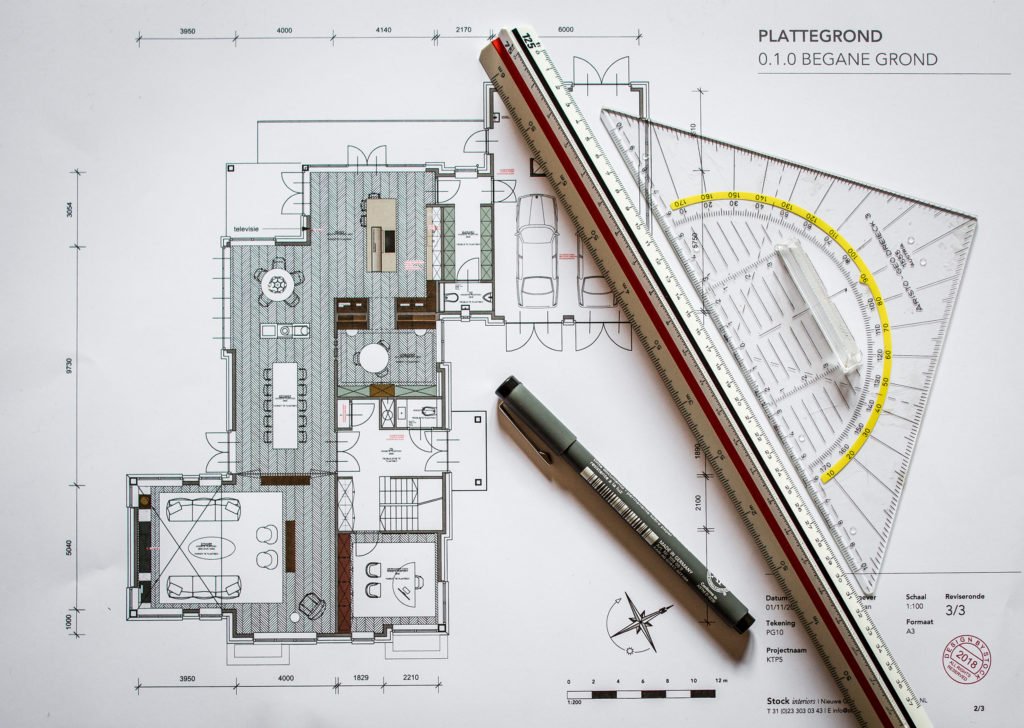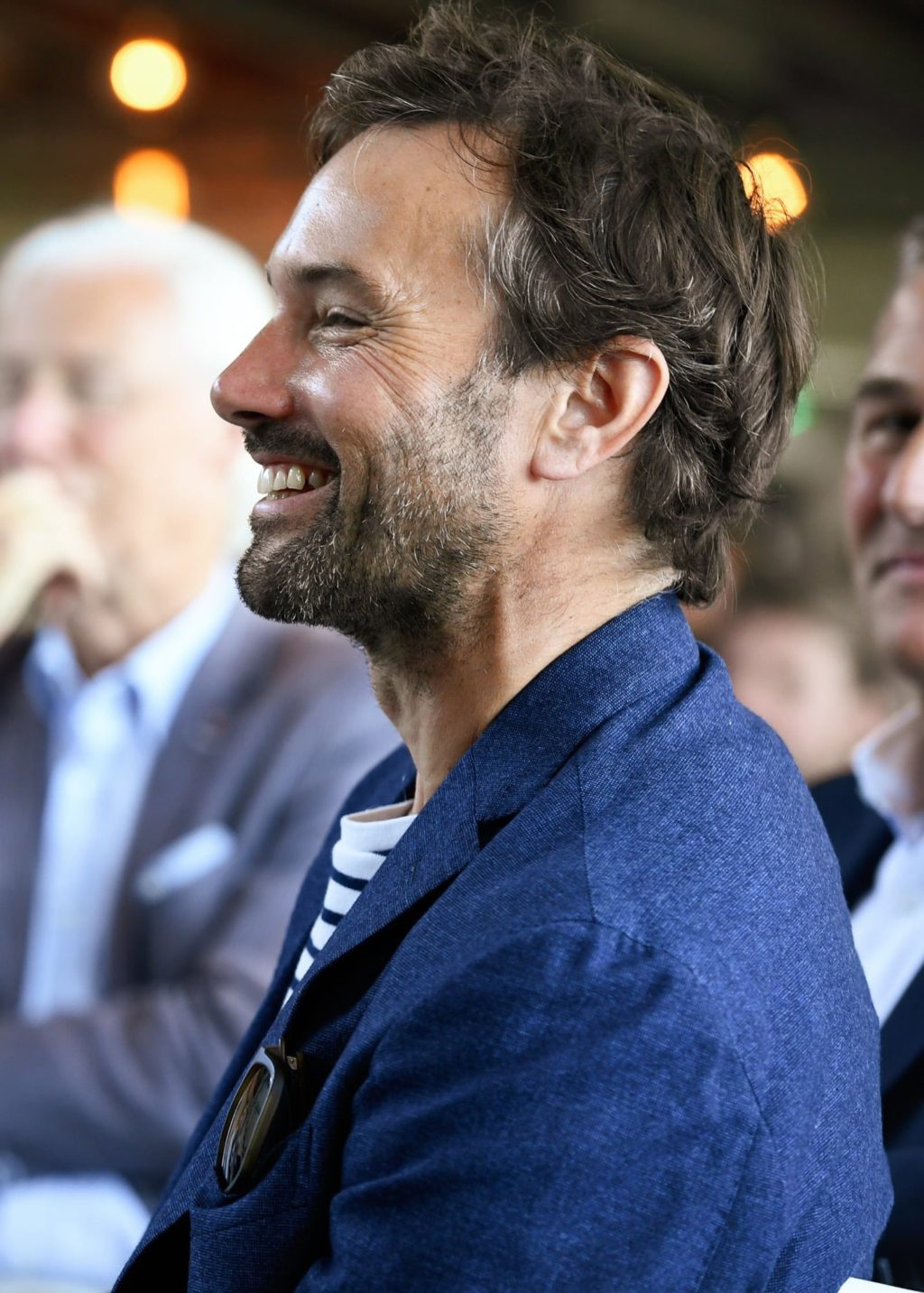25.12.18
Interior Design starts with reviewing the Architecture of a house

Every successful design plan, whether it’s for an apartment, modern loft, historic villa, country estate, or new building, begins with the floor plan.
Each decision the architect makes requires consideration of factors that are essential to the floor plan and flow, as well as the function and distinctive vibe of each room. With respect to existing structures, this involves referencing old drawings to understand the ideas of the original architect and their core concept so that we can implement our own ideas to the best of our abilities. When designing a new building or renovating an existing structure, Stock Dutch Design sits down with all parties during the early planning phases in order to ensure that decisions regarding the floor plan and function of the rooms are coordinated with decisions regarding interior decoration. This approach produces the best combination of creative forces and ensures that the building and its interior form one cohesive unit and that it fulfills the wishes of the residents. Sometimes the floor plan needs to be further adapted.
Architecture is subject to continuous change. This change comes about from the culture-based way in which we work and live our lives. In the Dutch Golden Age, the patrician houses in cities such as Amsterdam were equipped with bedrooms, hallways and other rooms that were reserved for staff. At that time, nobody thought of spending time in the kitchen. Today, the kitchen is often the heart of a house. Here, we quickly check our e-mails, the kids do their homework, we sit with friends at the cooking island to drink a glass of wine while food is cooking and then eat together at a large table.
"Stock Dutch Design always strives to create aesthetic tension."
Prior to renovation or construction, a detailed overview of the rooms with their respective functions should be drafted and the lifestyle and expectations of the heads of the household should be established. This analysis, which is conducted prior to the actual planning phase, must include questions such as the following: How large is the family now, and how large will it be in a few years? Do you often gather together in the house? If yes, where? How great is the need for personal space? Does the family eat breakfast together? If yes, how long does breakfast last? Does the house need private rooms for TV watching, studying or work? Do friends and/or relatives come for visits and stay overnight? Where is the laundry done? Where would a resident ideally be spending his/her free time and what would he/she be doing?
In this phase, it is extremely important to inspect the house, the surrounding area and the original construction drawings. How many and what type of rooms does the house have? How is it oriented, and where does the light enter? Which rooms are sunny and which rooms are not? When do the sunny rooms let in the most light? What effect do these rooms have on dark winter days? How large are the rooms, and how can they be utilized? The answers and requests of the residents can be used to draft a rough initial plan that stipulates the ideal layout of all the rooms (kitchen, bedrooms, bathrooms, TV room etc.). When renovating an existing house, the next step is to determine how this plan fits in with the existing situation. For example, is the family’s request to make the kitchen the heart of the house compatible with the existing room layout? Or do walls have to be torn down and new ones built? Do rooms have to be swapped? Other points of discussion include where the living room should be located and whether a study and/or home office is needed. Do the residents want a separate dining room or would they prefer a room for relaxation?
In the phase that follows, the answers to all these questions are incorporated into a 3D draft so that the residents get a first impression of what their dream house will look like. If there are no further changes, the plans are developed, completed and then the final renovation or construction plans are drafted.
Then it’s time for the third phase: selection of materials. What materials should be used for the renovation or construction? What materials should be used for the floors and walls? What should the doors, windows, and window frames look like? And so on. These decisions are at least as important as the renovation or construction itself. Sometimes the construction style determines the type of material. A house from the ’30s uses different materials than a house from the ’90s or a new house. Contrasting combinations are always exciting, especially with respect to material, as long as compliance with legal regulations is ensured. A Berlage house always uses modern materials, assuming that these are still part of the contemporary style. Stock Interiors prefers to use natural materials such as wood and natural stone, but also various forms of steel and concrete. Blue steel has a special, harsh effect, and just like wood has an easily recognizable texture. We also deal with the room layout details, the things that give a house character. This includes door knobs, wainscoting, and decorations. In short, material selection and construction shape the future appearance of a house.
Once the materials have been chosen, the creative and most exciting phase begins: the room layout involving curtains, wallpaper, colors, furniture, and art objects as well as the tiniest details such as hooks, handles, candles, and pillows. Stock Dutch Design always strives to create aesthetic tension between colors and patterns and surprising combinations of seating, chairs, and lamps. Finally, elaborate lighting and sound plans really bring the house to life.
We live and build in a unique time in which we are becoming increasingly aware of the consequences that our actions have on nature and the environment. For this reason, topics such as energy-conscious construction are more frequently the focus of our conversations with residents and this fantastic approach is being taken more often. Stock Dutch design is embracing a green future and has experienced partners that it can collaborate with to realize these ecological plans. These drawings and photos were created in collaboration with Florentijn Vleugels from DENOLDERVLEUGELS Architects & Associates.
